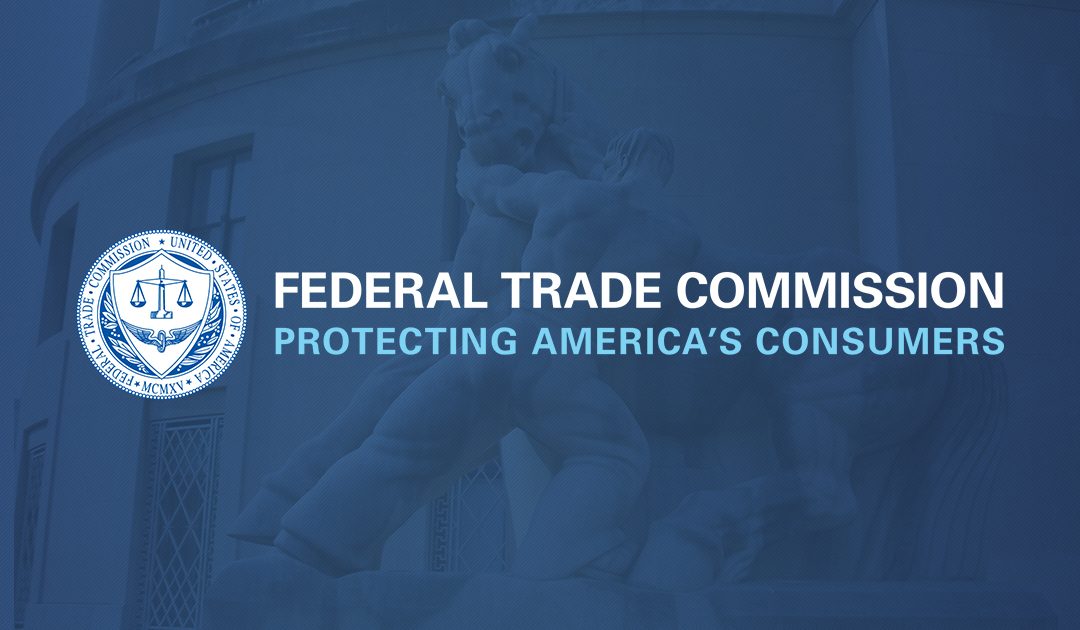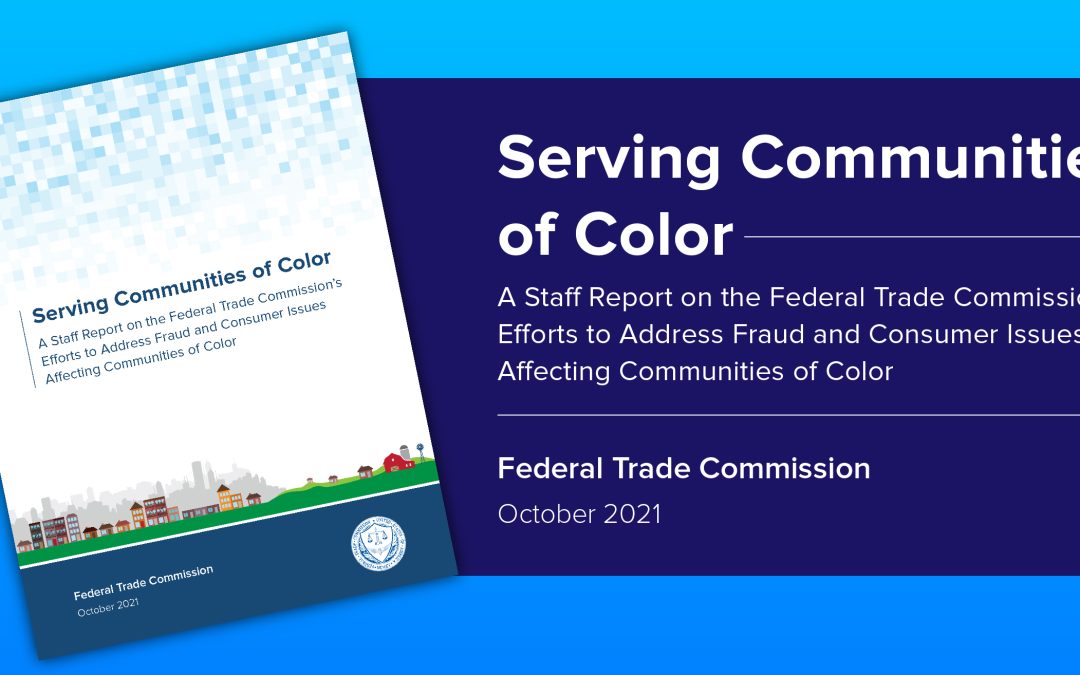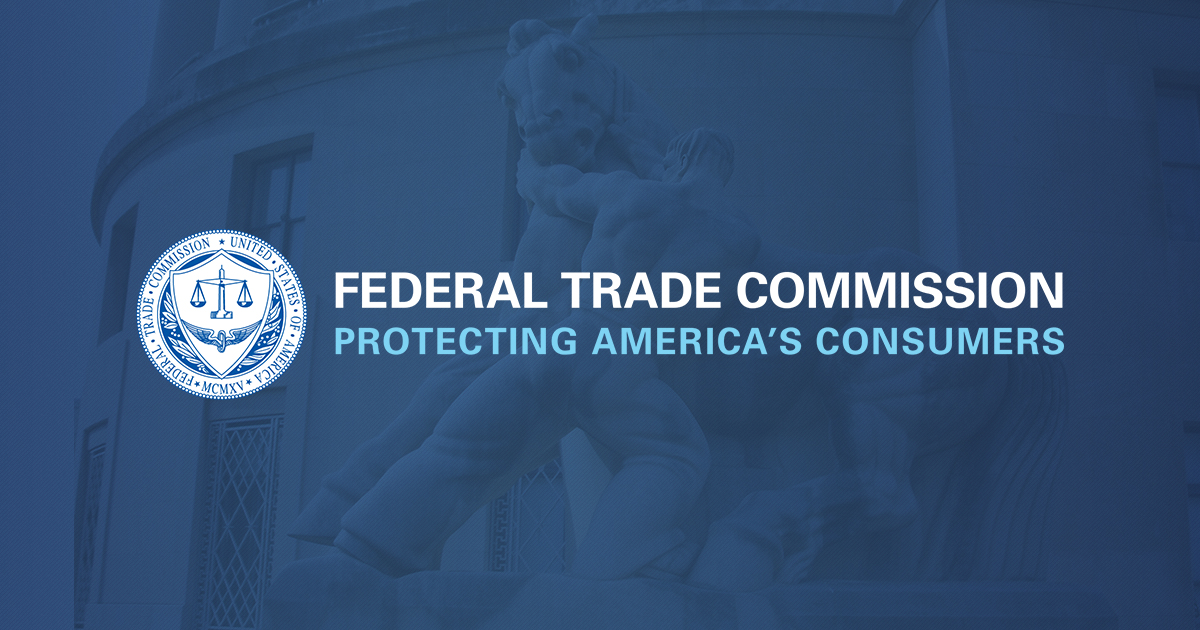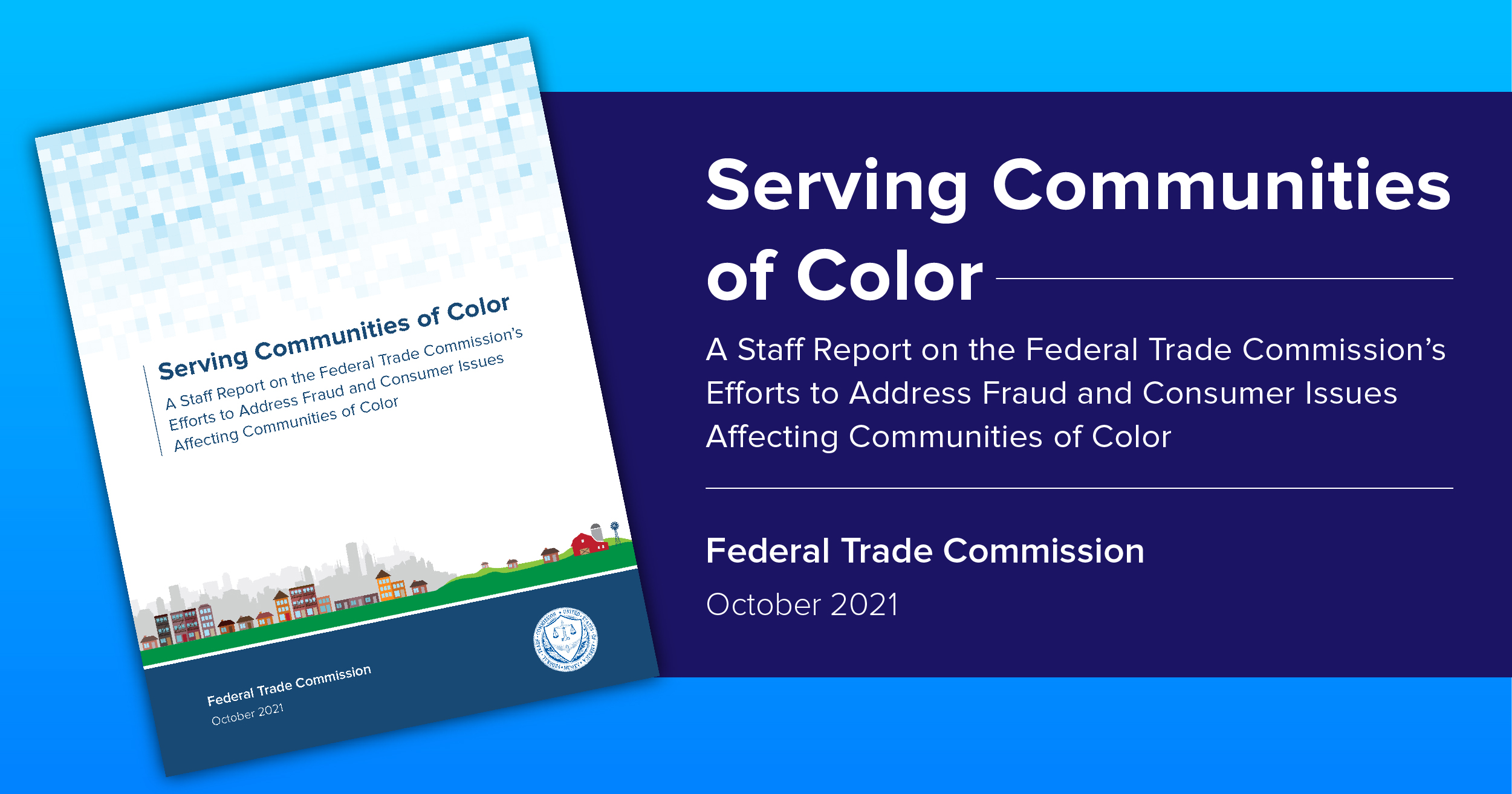
by Scott Muniz | Oct 15, 2021 | Security
This article was originally posted by the FTC. See the original article here.
During Medicare’s Open Enrollment Period (OEP), which begins on October 15 and ends December 7, Medicare beneficiaries can choose the plans that are best for them for 2022. You can get help comparing Medicare plans from your local State Health Insurance Assistance Program (SHIP), available in each U.S. state, territory, and the District of Columbia. Private insurance companies administer, market, and sell Medicare Advantage (MA, Part C) and Medicare Prescription Drug Plans (Part D), so it’s important to understand your rights and some of the limits on marketing. That way you’ll be prepared if an insurance broker or agent tries to enroll you in a Medicare plan that isn’t right for you.
Know your rights
If you request an appointment with an agent to visit or call to talk about your Medicare coverage options, remember you have certain rights and agents must follow the law:
- Agents must give you information only about items listed in the scope of appointment form you filled out when you asked for an appointment. They can’t talk about other Medicare or insurance products that you didn’t ask to talk about.
- Agents can’t set their own time limits for you to sign up for a plan. Everyone has until December 7 to enroll, and there aren’t any extra benefits for signing up early.
- They can’t threaten to take away your benefits if you don’t sign up for a plan or offer you gifts if you agree to sign up.
- Agents cannot suggest that Medicare endorses or prefers their plan.
After you pick the plan that’s right for you, be sure you get all the details in writing before you sign up. Take your time to read all information and verify details. For example, before you sign up, reach out to your doctors to ensure they are in that plan’s network.
Report a marketing violation
There are limits on how companies and agents selling Medicare plans can contact you and what they can say. For example:
- You should never get a phone call from a company you don’t have a relationship with.
- A company must not represent itself as Medicare, Social Security, or Medicaid.
- You shouldn’t get information — like leaflets, flyers, door hangers, etc. — on your car or at home from a company you don’t have an appointment with.
- An agent can’t come back to your home without an invitation.
- They can’t mislead you about coverage for prescriptions or services. Always review your Explanation of Benefits (EOB) to be sure your coverage matches what was promised.
- They can’t promise that you can keep your Medigap plan (supplemental plan) when you sign up for a Medicare Advantage plan. The truth is, you can’t have both a Medigap plan and a Medicare Advantage plan.
If you notice one of these marketing violations, please tell your local Senior Medicare Patrol.
Protect your medical information
Scammers might call and pretend to be Medicare representatives or agents in an attempt to steal your Medicare number or other personal information. They can use a fake CallerID name to impersonate Medicare or another organization you know. Don’t trust the name displayed on your phone’s CallerID screen. If anyone calls and asks for your Medicare, Social Security, or bank or credit card information, hang up. A scammer can use your personal information to file false claims, sign you up for a plan to which you didn’t agree, or even steal your identity.
For more information and help reporting Medicare fraud, errors, or abuse, visit smpresource.org or call 1-877-808-2468. To report an impersonator who pretended to be from Medicare, call 1-800-MEDICARE and visit ReportFraud.ftc.gov. If you think someone misused your personal or financial information, report it at IdentityTheft.gov and get started on a recovery plan.
Brought to you by Dr. Ware, Microsoft Office 365 Silver Partner, Charleston SC.
by Scott Muniz | Oct 15, 2021 | Security, Technology
This article is contributed. See the original author and article here.
The Apache Software Foundation has released a security advisory to address a vulnerability in multiple versions of Tomcat. An attacker could exploit this vulnerability to cause a denial of service condition.
CISA encourages users and administrators to review Apache’s security advisory for CVE-2021-42340 and apply the necessary updates.

by Scott Muniz | Oct 15, 2021 | Security
This article was originally posted by the FTC. See the original article here.
The newly-released
Serving Communities of Color Report summarizes the past five years of the FTC’s efforts to address, understand, and educate people about consumer issues that have a disproportionately
negative impact on communities of color. And, it confirms the FTC’s commitment to continue this important work.
Law enforcement: The FTC filed more than 25 actions involving alleged conduct that either targeted or disproportionately impacted communities of color. Cases challenged unlawful practices by auto sellers, for-profit schools, money-making opportunities, student debt relief schemes, and more.
Research: FTC research shows that people in communities of color experience fraud and consumer problems in unique ways. For example:
- Top fraud and consumer issues reported. The FTC’s reporting data showed that the top percentage of the reports by people living in majority White and majority Latino communities were about impersonator scams. But in majority Black communities, the top percentage of the reports related to problems with credit bureaus.
- Latino community experiences. The FTC’s reporting data also showed that people living in majority Latino communities filed higher percentages of reports than majority White communities about credit bureaus, banks and lenders, debt collection, auto issues, and business opportunities.
- Black community experiences. An analysis of 23 FTC cases showed that the cases affecting the largest number of people in predominantly Black communities involved payday loan applications, student debt relief programs, and money-making schemes.
- How scammers make people pay. Reports from majority Black and Latino communities show that people are more likely to pay scammers in ways that have few, if any, fraud protections ― so: cash, cryptocurrency, money orders, and debit cards. In contrast, reports from majority White communities show that people are more likely to paying scammers with credit cards.
Outreach: Sharing relevant, clear, and in-language consumer protection information through people and groups trusted in communities of color is essential to reaching those communities.
The FTC is committed to serving communities of color, and there’s more to do – more research, building trust, and seeking reports – to inform greater law enforcement and enhance education. You can help: share FTC resources in your community. And, if you spot a scam or consumer problem, tell the FTC at
ReportFraud.ftc.gov.
Brought to you by Dr. Ware, Microsoft Office 365 Silver Partner, Charleston SC.
by Scott Muniz | Oct 14, 2021 | Security, Technology
This article is contributed. See the original author and article here.
CISA, the Federal Bureau of Investigation (FBI), the Environmental Protection Agency (EPA), and the National Security Agency (NSA) have released a joint Cybersecurity Advisory (CSA) that details ongoing cyber threats to U.S. Water and Wastewater Systems (WWS) Sector. This activity—which includes cyber intrusions leading to ransomware attacks—threatens the ability of WWS facilities to provide clean, potable water to, and effectively manage the wastewater of, their communities. The joint CSA provides extensive mitigations and resources to assist WWS Sector facilities in strengthening operational resilience and cybersecurity practices.
CISA has also released a Cyber Risks & Resources for the Water and Wastewater Systems Sector infographic that details both information technology and operational technology risks the WWS Sector faces and provides select resources.
by Scott Muniz | Oct 14, 2021 | Security, Technology
This article is contributed. See the original author and article here.
Summary
Immediate Actions WWS Facilities Can Take Now to Protect Against Malicious Cyber Activity
• Do not click on suspicious links.
• If you use RDP, secure and monitor it.
• Use strong passwords.
• Use multi-factor authentication.
Note: This advisory uses the MITRE Adversarial Tactics, Techniques, and Common Knowledge (ATT&CK®) framework, version 9. See the ATT&CK for Enterprise for all referenced threat actor tactics and techniques.
This joint advisory is the result of analytic efforts between the Federal Bureau of Investigation (FBI), the Cybersecurity and Infrastructure Agency (CISA), the Environmental Protection Agency (EPA), and the National Security Agency (NSA) to highlight ongoing malicious cyber activity—by both known and unknown actors—targeting the information technology (IT) and operational technology (OT) networks, systems, and devices of U.S. Water and Wastewater Systems (WWS) Sector facilities. This activity—which includes attempts to compromise system integrity via unauthorized access—threatens the ability of WWS facilities to provide clean, potable water to, and effectively manage the wastewater of, their communities. Note: although cyber threats across critical infrastructure sectors are increasing, this advisory does not intend to indicate greater targeting of the WWS Sector versus others.
To secure WWS facilities—including Department of Defense (DoD) water treatment facilities in the United States and abroad—against the TTPs listed below, CISA, FBI, EPA, and NSA strongly urge organizations to implement the measures described in the Recommended Mitigations section of this advisory.
Click here for a PDF version of this report.
Technical Details
Threat Overview
Tactics, Techniques, and Procedures
WWS facilities may be vulnerable to the following common tactics, techniques, and procedures (TTPs) used by threat actors to compromise IT and OT networks, systems, and devices.
- Spearphishing personnel to deliver malicious payloads, including ransomware [T1566].
- Spearphishing is one of the most prevalent techniques used for initial access to IT networks. Personnel and their potential lack of cyber awareness are a vulnerability within an organization. Personnel may open malicious attachments or links to execute malicious payloads contained in emails from threat actors that have successfully bypassed email filtering controls.
- When organizations integrate IT with OT systems, attackers can gain access—either purposefully or inadvertently—to OT assets after the IT network has been compromised through spearphishing and other techniques.
- Exploitation of internet-connected services and applications that enable remote access to WWS networks [T1210].
- For example, threat actors can exploit a Remote Desktop Protocol (RDP) that is insecurely connected to the internet to infect a network with ransomware. If the RDP is used for process control equipment, the attacker could also compromise WWS operations. Note: the increased use of remote operations due to the COVID-19 pandemic has likely increased the prevalence of weaknesses associated with remote access.
- Exploitation of unsupported or outdated operating systems and software.
- Threat actors likely seek to take advantage of perceived weaknesses among organizations that either do not have—or choose not to prioritize—resources for IT/OT infrastructure modernization. WWS facilities tend to allocate resources to physical infrastructure in need of replacement or repair (e.g., pipes) rather than IT/OT infrastructure.
- The fact that WWS facilities are inconsistently resourced municipal systems—not all of which have the resources to employ consistently high cybersecurity standards—may contribute to the use of unsupported or outdated operating systems and software.
- Exploitation of control system devices with vulnerable firmware versions.
- WWS systems commonly use outdated control system devices or firmware versions, which expose WWS networks to publicly accessible and remotely executable vulnerabilities. Successful compromise of these devices may lead to loss of system control, denial of service, or loss of sensitive data [T0827].
WWS Sector Cyber Intrusions
Cyber intrusions targeting U.S. WWS facilities highlight vulnerabilities associated with the following threats:
- Insider threats, from current or former employees who maintain improperly active credentials
- Ransomware attacks
WWS Sector cyber intrusions from 2019 to early 2021 include:
- In August 2021, malicious cyber actors used Ghost variant ransomware against a California-based WWS facility. The ransomware variant had been in the system for about a month and was discovered when three supervisory control and data acquisition (SCADA) servers displayed a ransomware message.
- In July 2021, cyber actors used remote access to introduce ZuCaNo ransomware onto a Maine-based WWS facility’s wastewater SCADA computer. The treatment system was run manually until the SCADA computer was restored using local control and more frequent operator rounds.
- In March 2021, cyber actors used an unknown ransomware variant against a Nevada-based WWS facility. The ransomware affected the victim’s SCADA system and backup systems. The SCADA system provides visibility and monitoring but is not a full industrial control system (ICS).
- In September 2020, personnel at a New Jersey-based WWS facility discovered potential Makop ransomware had compromised files within their system.
- In March 2019, a former employee at Kansas-based WWS facility unsuccessfully attempted to threaten drinking water safety by using his user credentials, which had not been revoked at the time of his resignation, to remotely access a facility computer.
Mitigations
The FBI, CISA, EPA, and NSA recommend WWS facilities—including DoD water treatment facilities in the United States and abroad—use a risk-informed analysis to determine the applicability of a range of technical and non-technical mitigations to prevent, detect, and respond to cyber threats.
WWS Monitoring
Personnel responsible for monitoring WWS should check for the following suspicious activities and indicators, which may be indicative of threat actor activity:
- Inability of WWS facility personnel to access SCADA system controls at any time, either entirely or in part;
- Unfamiliar data windows or system alerts appearing on SCADA system controls and facility data screens that could indicate a ransomware attack;
- Detection by SCADA system controls, or by water treatment personnel, of abnormal operating parameters—such as unusually high chemical addition rates—used in the safe and proper treatment of drinking water;
- Access of SCADA systems by unauthorized individuals or groups, e.g., former employees and current employees not authorized/assigned to operate SCADA systems and controls.
- Access of SCADA systems at unusual times, which may indicate that a legitimate user’s credentials have been compromised
- Unexplained SCADA system restarts.
- Unchanging parameter values that normally fluctuate.
Remote Access Mitigations
Note: The increased use of remote operations due to the COVID-19 pandemic increases the necessity for asset owner-operators to assess the risk associated with enhanced remote access to ensure it falls within acceptable levels.
- Require multi-factor authentication for all remote access to the OT network, including from the IT network and external networks.
- Utilize blocklisting and allowlisting to limit remote access to users with a verified business and/or operational need.
- Ensure that all remote access technologies have logging enabled and regularly audit these logs to identify instances of unauthorized access.
- Utilize manual start and stop features in place of always activated unattended access to reduce the time remote access services are running.
- Audit networks for systems using remote access services.
- Close unneeded network ports associated with remote access services (e.g., RDP – Transmission Control Protocol [TCP] Port 3389).
- When configuring access control for a host, utilize custom settings to limit the access a remote party can attempt to acquire.
Network Mitigations
- Implement and ensure robust network segmentation between IT and OT networks to limit the ability of malicious cyber actors to pivot to the OT network after compromising the IT network.
- Implement demilitarized zones (DMZs), firewalls, jump servers, and one-way communication diodes to prevent unregulated communication between the IT and OT networks.
- Develop/update network maps to ensure a full accounting of all equipment that is connected to the network.
- Remove any equipment from networks that is not required to conduct operations to reduce the attack surface malicious actors can exploit.
Planning and Operational Mitigations
- Ensure the organization’s emergency response plan considers the full range of potential impacts that cyberattacks pose to operations, including loss or manipulation of view, loss or manipulation of control, and threats to safety.
- The plan should also consider third parties with legitimate need for OT network access, including engineers and vendors.
- Review, test, and update the emergency response plan on an annual basis to ensure accuracy.
- Exercise the ability to fail over to alternate control systems, including manual operation while assuming degraded electronic communications.
- Allow employees to gain decision-making experience via tabletop exercises that incorporate loss of visibility and control scenarios. Utilize resources such as the Environment Protection Agency’s (EPA) Cybersecurity Incident Action Checklist as well as the Ransomware Response Checklist on p. 11 of the CISA-Multi-State Information Sharing and Analysis Center (MS-ISAC) Joint Ransomware Guide.
Safety System Mitigations
- Install independent cyber-physical safety systems. These are systems that physically prevent dangerous conditions from occurring if the control system is compromised by a threat actor.
- Examples of cyber-physical safety system controls include:
- Size of the chemical feed pump
- Gearing on valves
- Pressure switches, etc.
- These types of controls benefit WWS Sector facilities—especially smaller facilities with limited cybersecurity capability—because they enable facility staff to assess systems from a worst-case scenario and determine protective solutions. Enabling cyber-physical safety systems allows operators to take physical steps to limit the damage, for example, by preventing cyber actors, who have gained control of a sodium hydroxide pump, from raising the pH to dangerous levels.
Additional Mitigations
- Foster an organizational culture of cyber readiness. See the CISA Cyber Essentials along with the items listed in the Resources section below for guidance.
- Update software, including operating systems, applications, and firmware on IT network assets. Use a risk-based assessment strategy to determine which OT network assets and zones should participate in the patch management program. Consider using a centralized patch management system.
- Set antivirus/antimalware programs to conduct regular scans of IT network assets using up-to-date signatures. Use a risk-based asset inventory strategy to determine how OT network assets are identified and evaluated for the presence of malware.
- Implement regular data backup procedures on both the IT and OT networks.
- Regularly test backups.
- Ensure backups are not connected to the network to prevent the potential spread of ransomware to the backups.
- When possible, enable OT device authentication, utilize the encrypted version of OT protocols, and encrypt all wireless communications to ensure the confidentiality and authenticity of process control data in transit.
- Employ user account management to:
- Remove, disable, or rename any default system accounts wherever possible.
- Implement account lockout policies to reduce risk from brute-force attacks.
- Monitor the creation of administrator-level accounts by third-party vendors with robust and privileged account management policies and procedures.
- Implement a user account policy that includes set durations for deactivation and removal of accounts after employees leave the organization or after accounts reach a defined period of inactivity.
- Implement data execution prevention controls, such as application allowlisting and software restriction policies that prevent programs from executing from common ransomware locations, such as temporary folders supporting popular internet browsers.
- Train users through awareness and simulations to recognize and report phishing and social engineering attempts. Identify and suspend access of users exhibiting unusual activity.
FBI, CISA, EPA, and NSA would like to thank Dragos as well as the WaterISAC for their contributions to this advisory.
Resources
Cyber Hygiene Services
CISA offers a range of no-cost cyber hygiene services—including vulnerability scanning and ransomware readiness assessments—to help critical infrastructure organizations assess, identify, and reduce their exposure to cyber threats. By taking advantage of these services, organizations of any size will receive recommendations on ways to reduce their risk and mitigate attack vectors.
Rewards for Justice Reporting
The U.S. Department of State’s Rewards for Justice (RFJ) program offers a reward of up to $10 million for reports of foreign government malicious activity against U.S. critical infrastructure. See the RFJ website for more information and how to report information securely.
StopRansomware.gov
The StopRansomware.gov webpage is an interagency resource that provides guidance on ransomware protection, detection, and response. This includes ransomware alerts, reports, and resources from CISA and other federal partners, including:
Additional Resources
For additional resources that can assist in preventing and mitigating this activity, see:
Disclaimer of Endorsement
The information and opinions contained in this document are provided “as is” and without any warranties or guarantees. Reference herein to any specific commercial products, process, or service by trade name, trademark, manufacturer, or otherwise, does not constitute or imply its endorsement, recommendation, or favoring by the United States Government, and this guidance shall not be used for advertising or product endorsement purposes.
Contact Information
To report suspicious or criminal activity related to information found in this Joint Cybersecurity Advisory, contact your local FBI field office at www.fbi.gov/contact-us/field-offices, or the FBI’s 24/7 Cyber Watch (CyWatch) at (855) 292-3937 or by e-mail at CyWatch@fbi.gov. When available, please include the following information regarding the incident: date, time, and location of the incident; type of activity; number of people affected; type of equipment used for the activity; the name of the submitting company or organization; and a designated point of contact. If you have any further questions related to this Joint Cybersecurity Advisory, or to request incident response resources or technical assistance related to these threats, contact CISA at CISAServiceDesk@cisa.dhs.gov.
Revisions
Initial Version: October 14, 2021
This product is provided subject to this Notification and this Privacy & Use policy.






Recent Comments